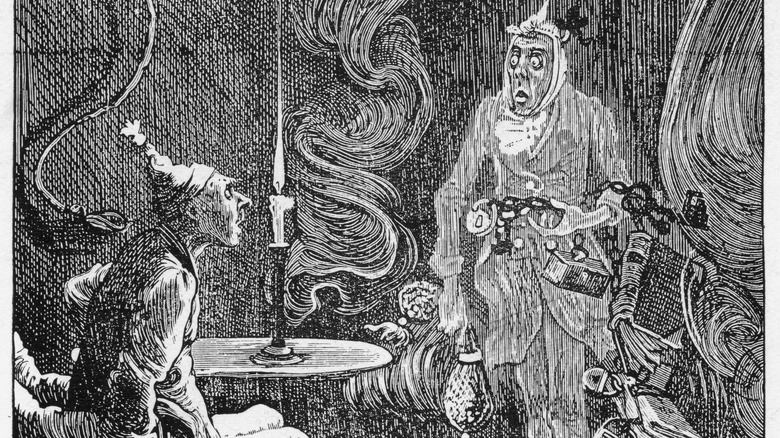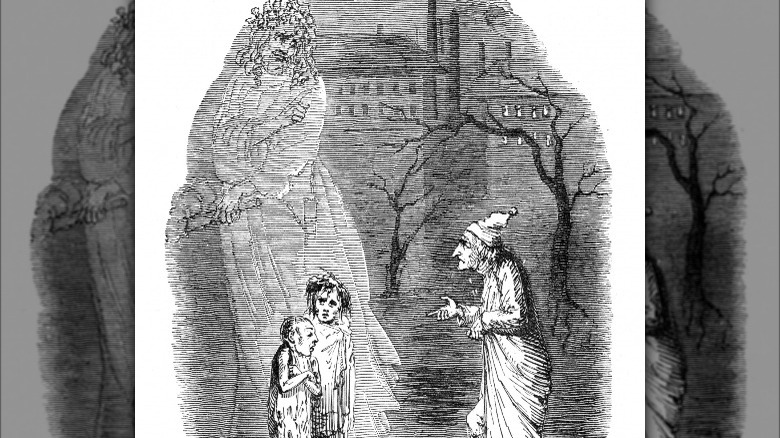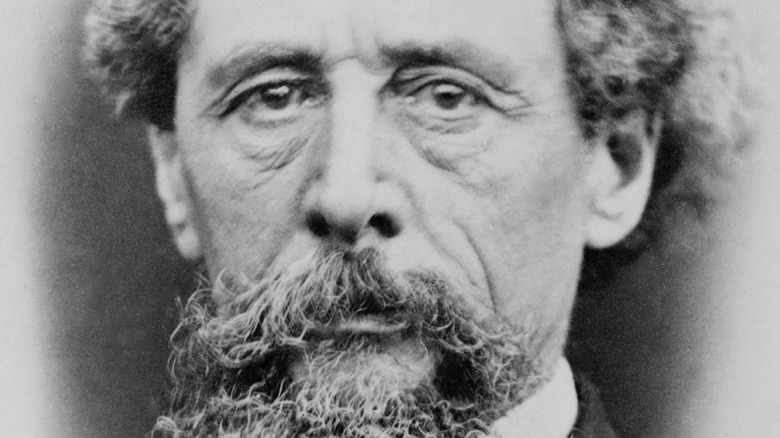Why Ghost Stories Were Once Popular At Christmastime
Today, in the United Kingdom and the United States, when the holiday season rolls around carols, nostalgic films, "The Nutcracker" ballet, and literature like "'Twas a Night Before Christmas" get dusted off for their annual service in helping people get into a celebratory spirit. Especially in the U.S., the old 1960s stop-motion "Rudolph the Red-Nosed Reindeer," the animated "How the Grinch Stole Christmas," and a slew of holiday-themed films from "It's a Wonderful Life" to "A Christmas Story" go into annual rotation.
While a few of these, like the aforementioned classic starring Jimmy Stewart, have some supernatural elements, they tend not to dive into the ghoulish themes more associated with Halloween. But during the Victorian era, that wasn't the case. Ghost stories were all the rage in England. "Nothing satisfies us on Christmas Eve but to hear each other tell authentic anecdotes about spectres. It is a genial, festive season, and we love to muse upon graves, and dead bodies, and murder, and blood," the British writer Jerome K. Jerome wrote in his 1891 book "Told After Supper."
A Strange Tradition with a Murky Past
The English love for sharing ghost stories at Christmas in England predated the Victorian Era, which ran from 1837 until 1901, in line with Queen Victoria's long reign, and began as an oral tradition going back at least to the 18th century, according to Tara Moore's 2009 book "Victorian Christmas in Print." There are even earlier traditions, not only in England but across the globe, in which telling ghost stories at the end of the year when the sun goes down early and people spent their time indoors around a fire was commonplace. "For a very, very, very long time, [the season] has provoked oral stories about spooky things in many countries and cultures all over the world," the folklorist Sara Cleto told History.
The Victorians took this oral tradition and supercharged and monetized it thanks to the steam printing press that allowed for the proliferation of periodicals that needed filling. Combined with higher literary rates, and the oral tradition of Christmastime ghost stories already in place, it became a hugely popular form of entertainment and soon ghosts and ghouls found their way into poetry, short stories, novels, and even nonfiction, per History and "Victorian Christmas in Print."
A Christmas Carol
While most of the ghost stories from the Victorian-era have disappeared from the collective memory, there is one that has remained popular to this day: "A Christmas Carol" by Charles Dickens. The novella, written in 1843, helped solidify the connection between ghost stories and Christmas during the Victorian era, according to History. Dickens' reason for writing the story of a miserly old man who changes his ways after meeting four ghosts on Christmas Eve, began with his desire to help the poor, especially young children who were forced to work, rather than as a staid holiday story, according to Time.
Besides "A Christmas Carol," Dickens helped popularize the Victorian tradition of a ghostly Christmas season through the two periodicals he edited that were heavy on ghost stories during the winter months, according to Smithsonian. The holiday tradition of telling ghost stories never really caught on in the U.S., since the nation's Puritan forebears didn't abide anything smacking of the supernatural and actually forbade celebrating Christmas, per Smithsonian and New England Today. And by the Victorian era, Americans had already begun to save their ghost stories for Halloween.


